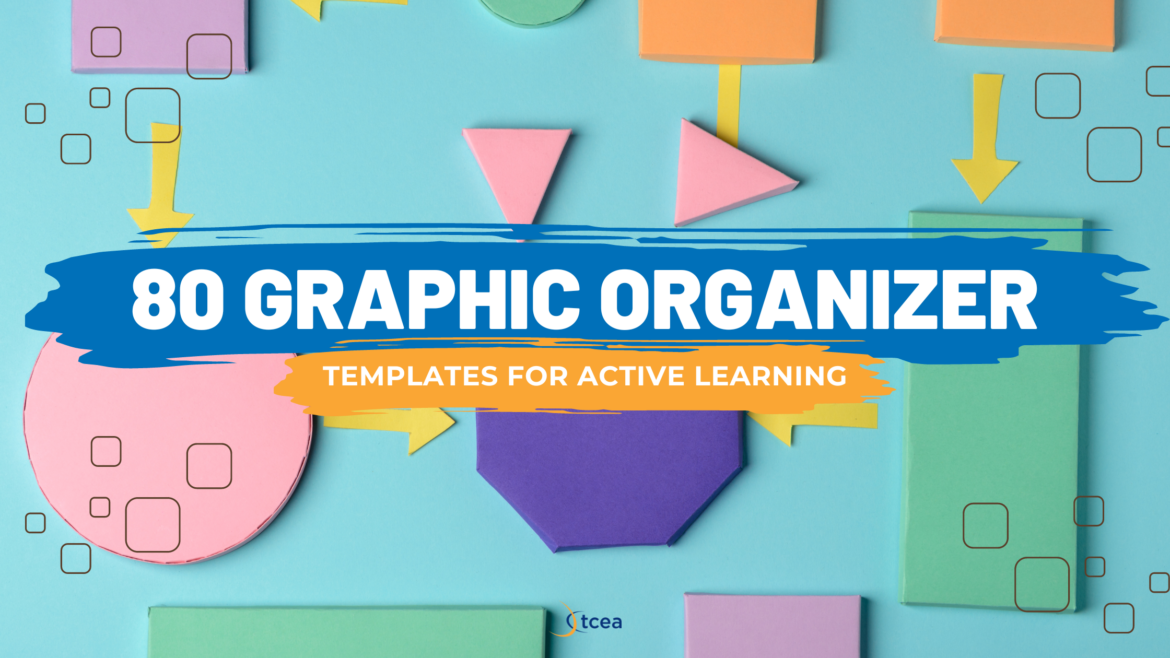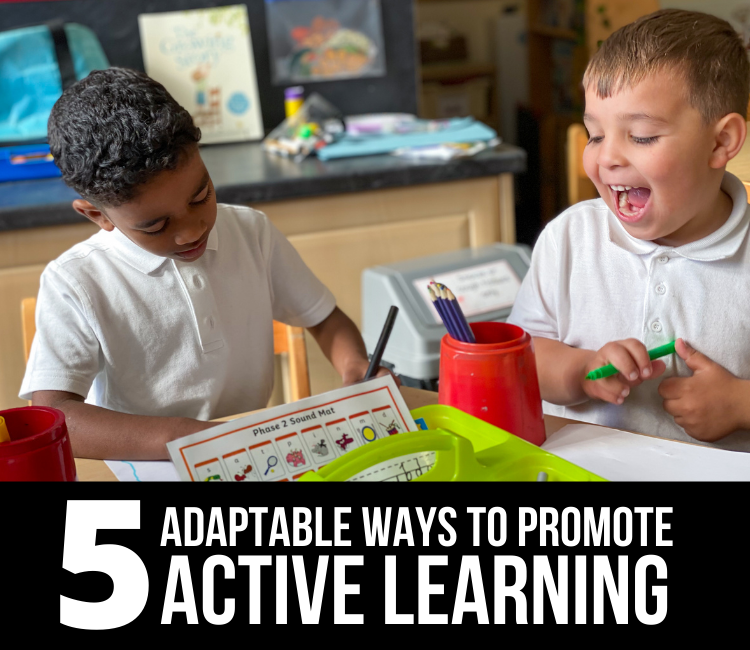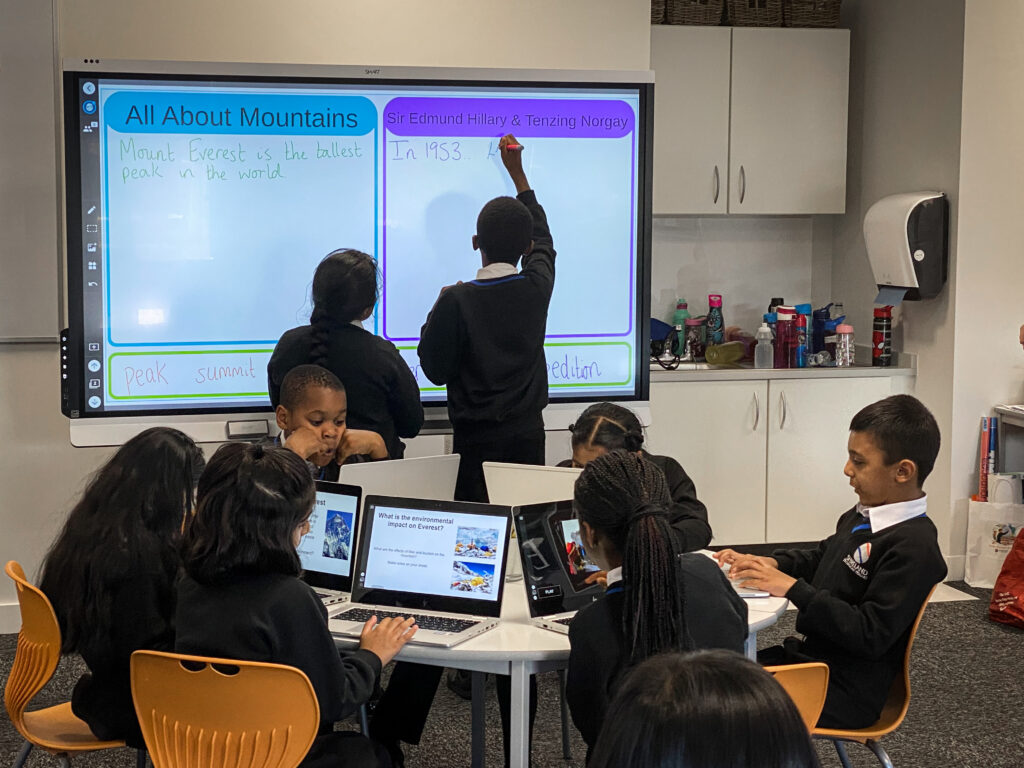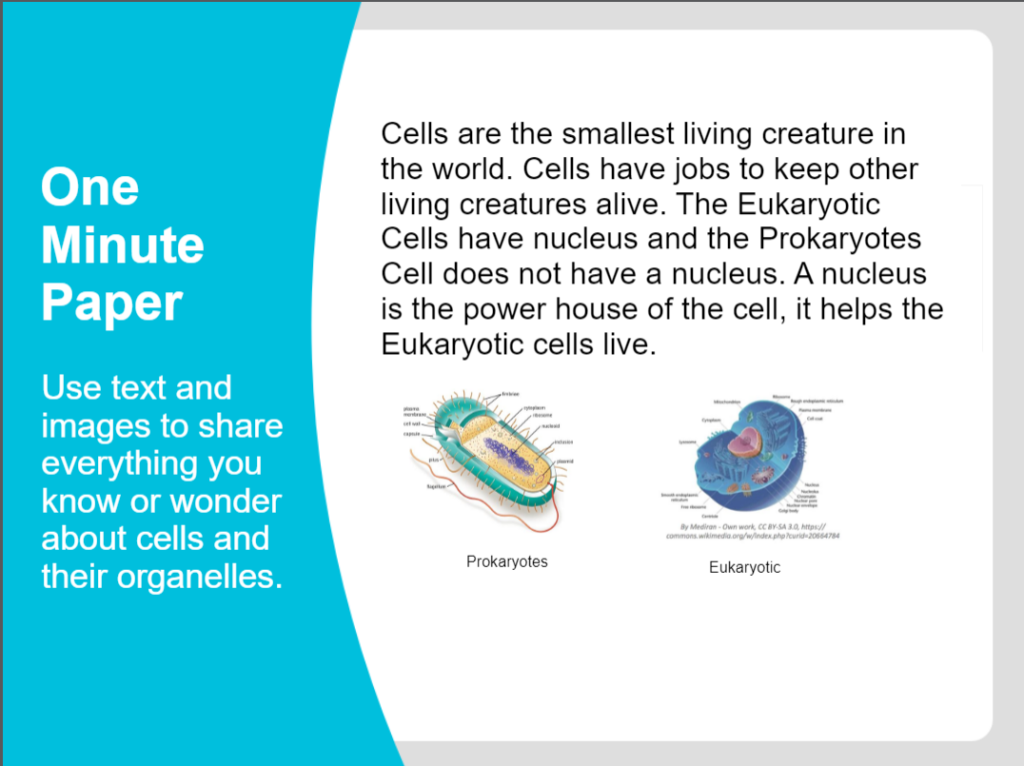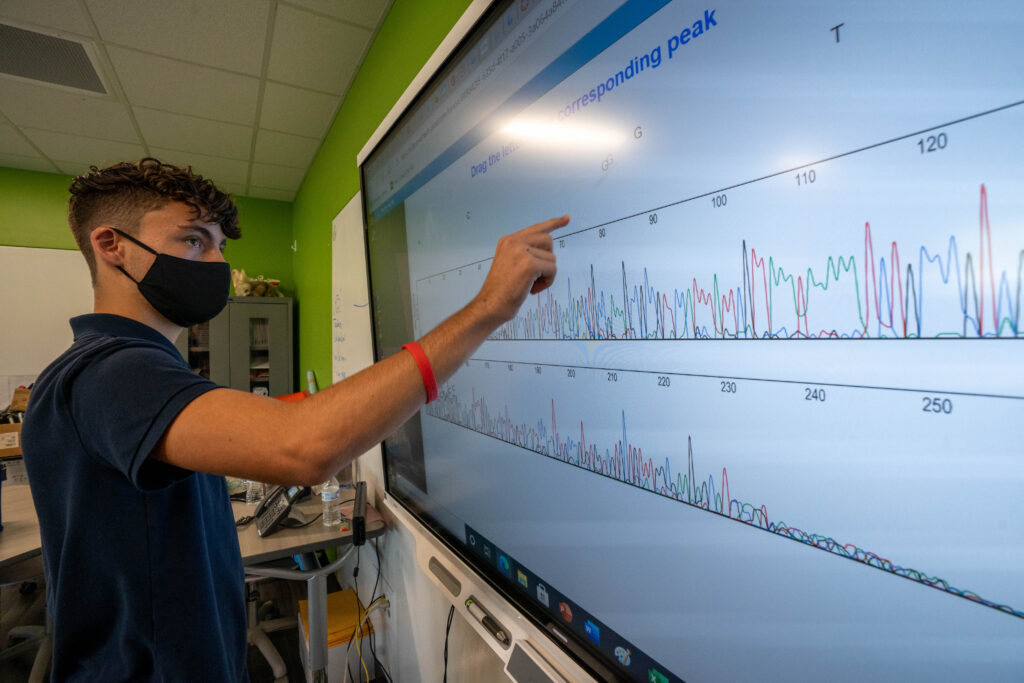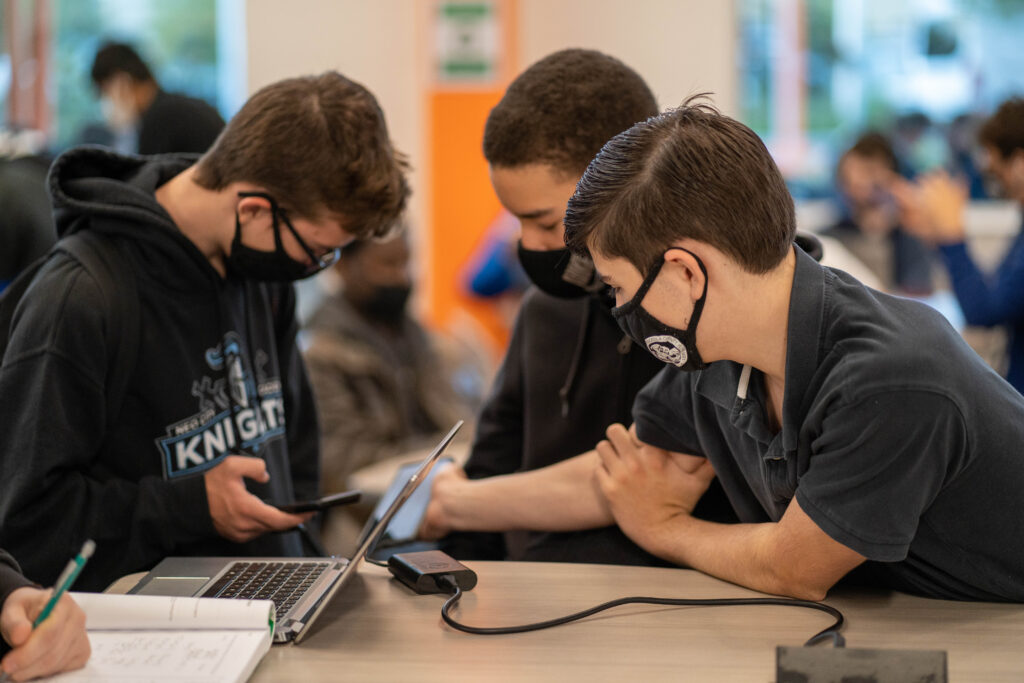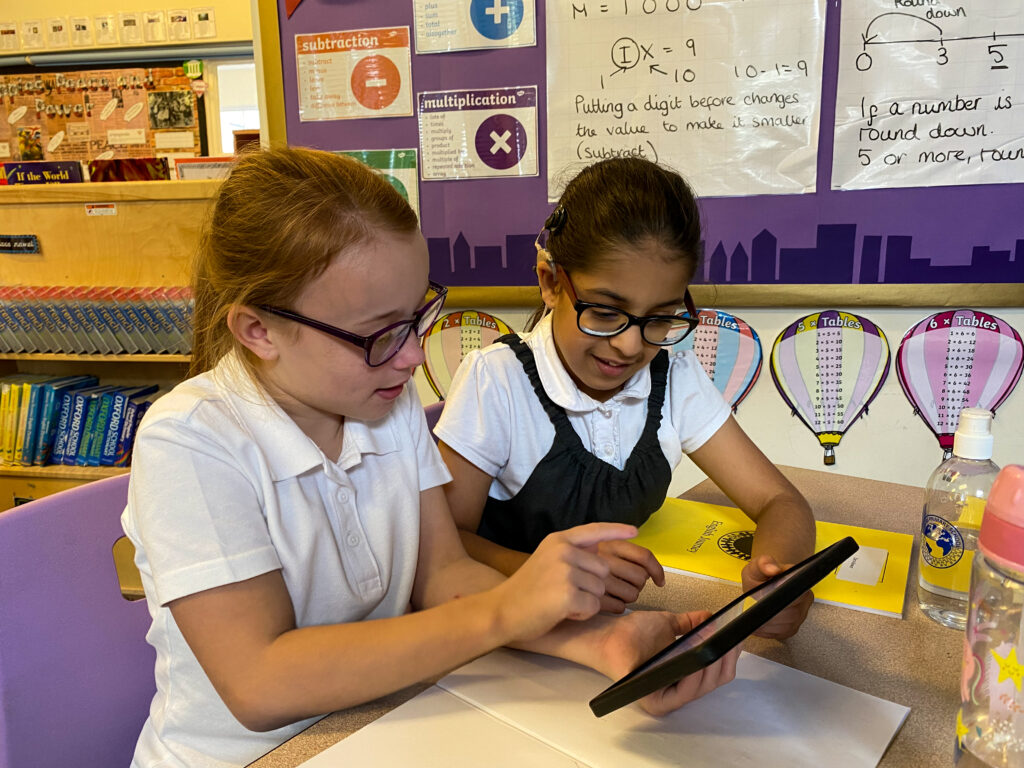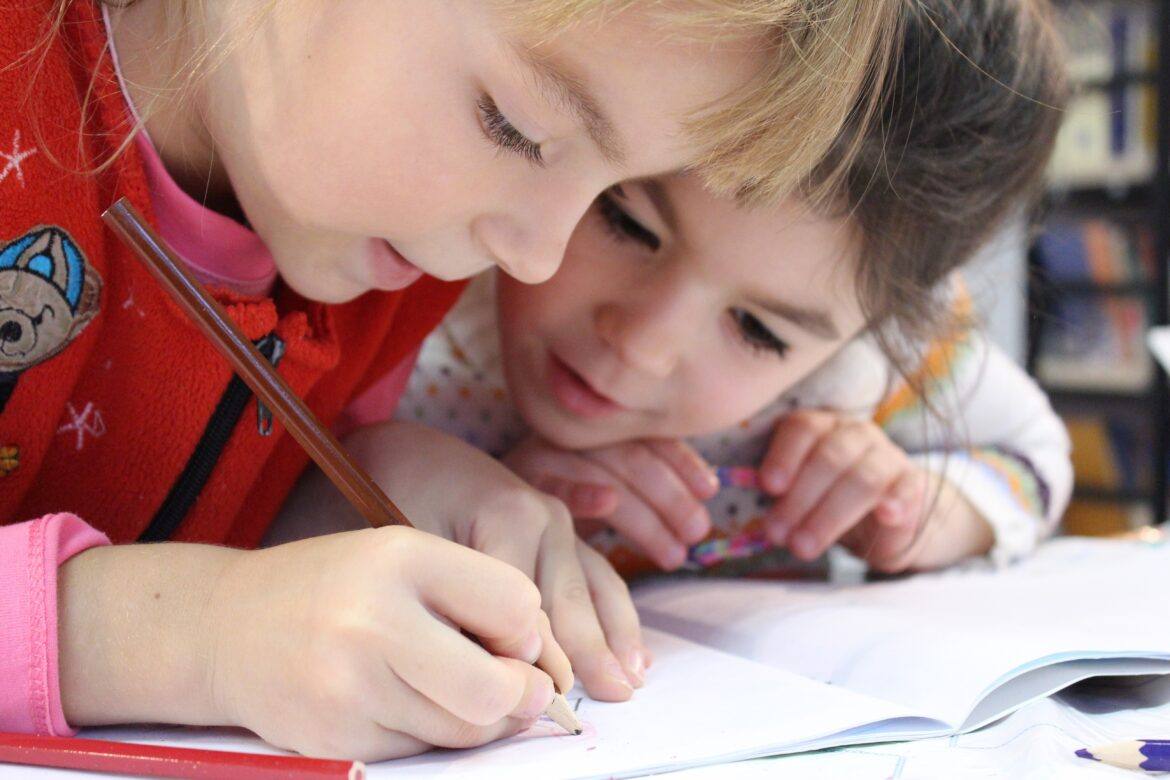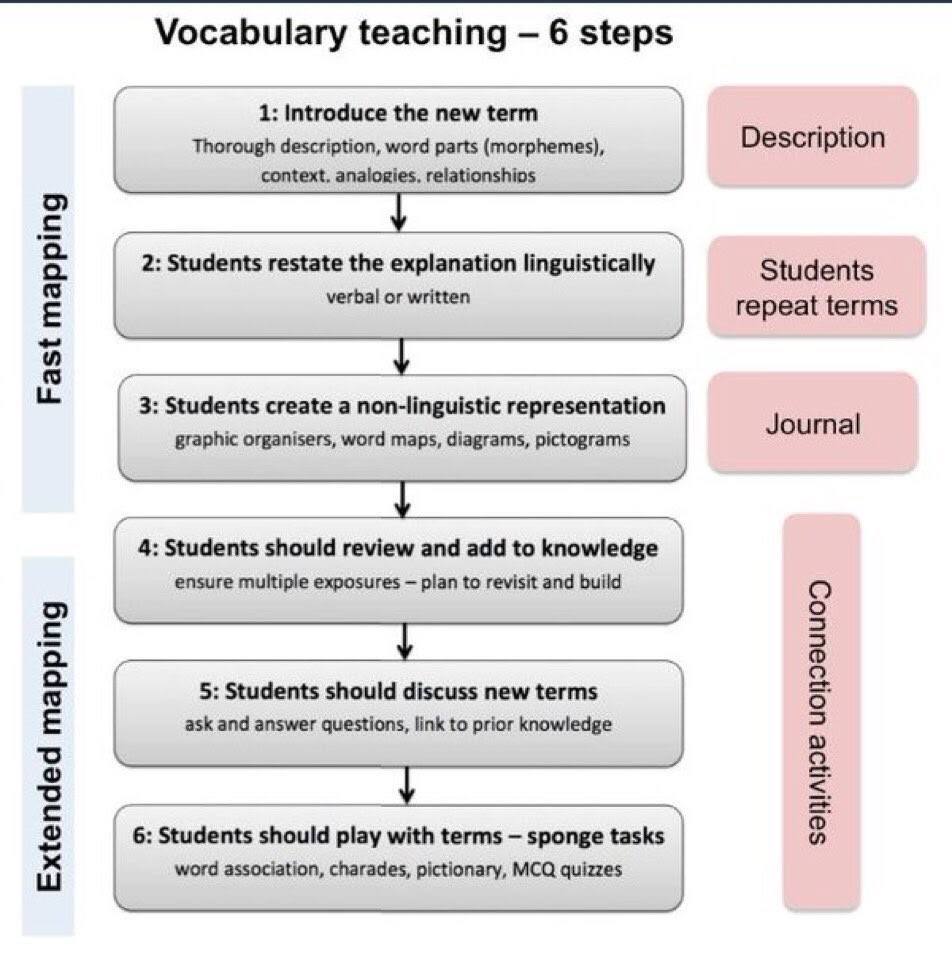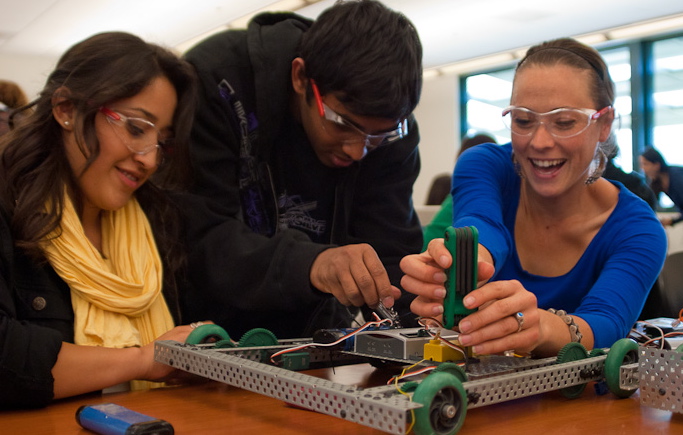If you are a reader like me, you can read a few pages of a book, pause for a second, and come to the realization that you can’t remember what you just read. Maybe you’re driving somewhere, and for a split second, you forget where you are driving. These types of experiences can happen easily because we are not actively thinking. The same thing happens to learners in our classrooms. In order to avoid these situations and seek deeper learning experiences for students that help them retain information, active learning instructional strategies can be utilized.
What Is Active Learning?
Active learning is a term used to refer to instructional strategies focused on getting learners to actively process new information such as through reflection, collaboration, writing, and more. Through active learning experiences, learners can retain more information than through passive learning experiences, such as note-taking. So it is important that educators implement active learning instructional strategies to improve learning outcomes. For those wanting to learn more about active learning, visit Cornell’s Center for Teaching Innovation.
Using Graphic Organizers for Active Learning (GOAL)
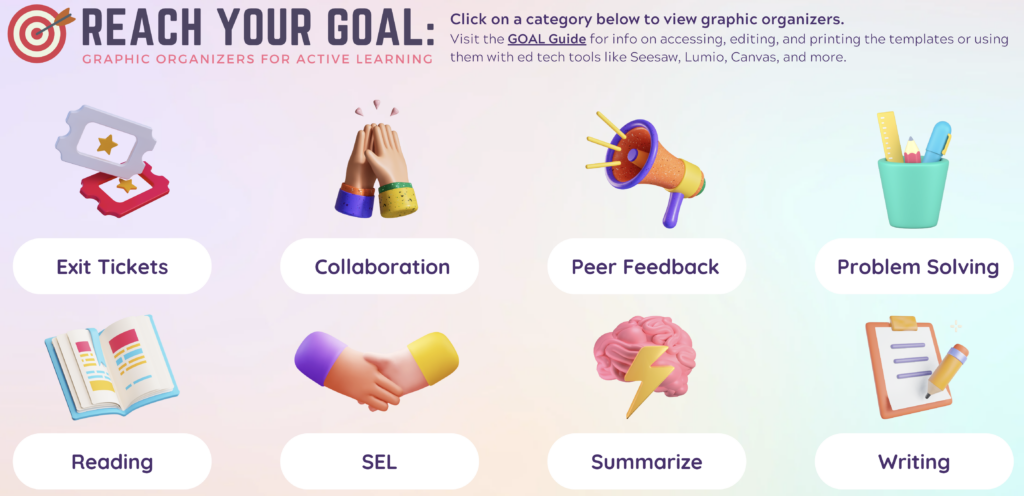
One easy way to incorporate more active learning strategies is through the use of graphic organizers. In order to make it easier for educators to find and use these resources, I designed a series of 80 “GOALs” or “Graphic Organizers for Active Learning”. These GOALs are free, ready-to-use, and designed as dual-language resources. For districts such as ours in San Antonio, with 20% emergent bilinguals, it is crucial to have resources that are available in English and Spanish. The graphic organizer templates are organized into different themes such as problem solving, collaboration, SEL, writing, and more to simplify the process of finding the exact template you need for lessons. The templates are designed with fun graphics and are meant to be engaging to your audiences.
The Graphic Organizer Templates
Here is a menu of eight categories of graphic organizers. Each category contains 10 different designs to choose from. The designs are created in Canva, an amazing design tool that is offering free services to K-12 schools. When you click on one of the designs, you’ll notice an option to use the template in Canva, meaning you can customize the template to fit exactly what you need, or you can use it as-is. Be sure to create a Canva account if you don’t already have one or talk to your district’s IT department about setting up access for your entire district.
Graphic Organizer Formats
When ready, you can print the graphic organizer for your students as a PDF file, or you can use these files with the ed tech tools of your choice. Since the GOALs are designed in Canva, you can download a PNG or a JPG file in order to place the graphic organizer into popular tools such as Kami, Lumio, Seesaw, or Canvas. For those educators ready to app smash these templates into ed tech tools, here is a guide with short video tutorials to help you get started.
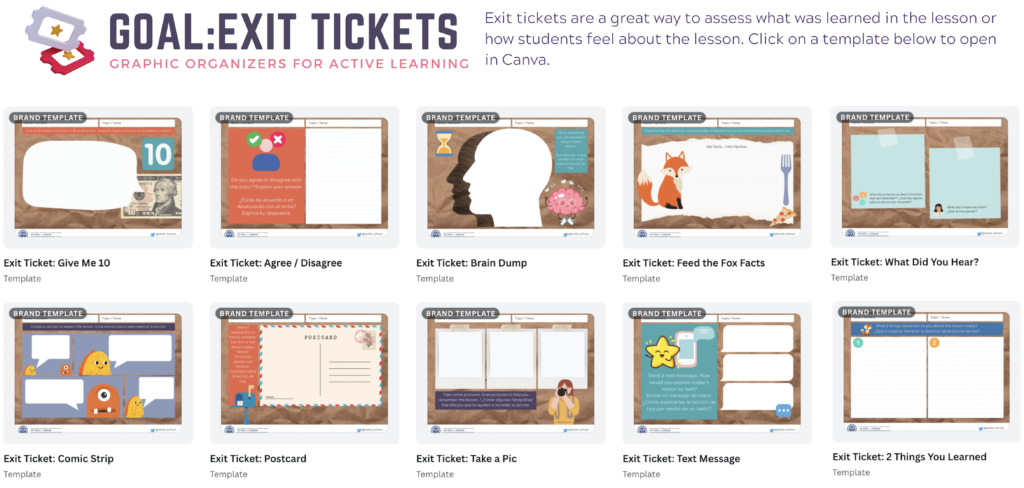
As educators, the instructional strategies we implement should seek to make learning more effective. Active learning can do this for our students, but it helps to have the resources we need to get started. It’s an added bonus if the resources are free, too! Make active learning a “GOAL” in 2023 by downloading these templates today.

